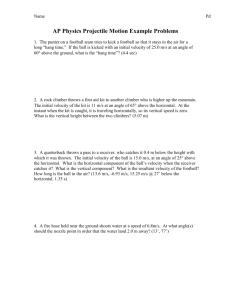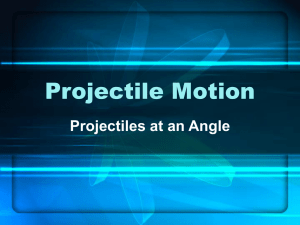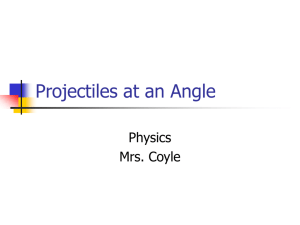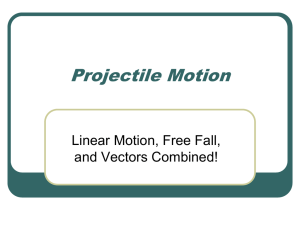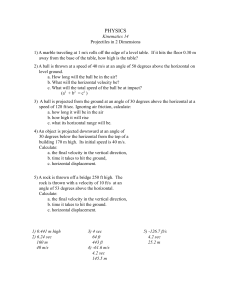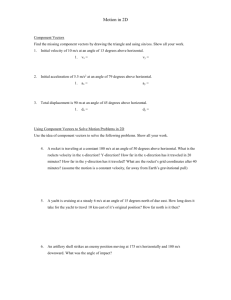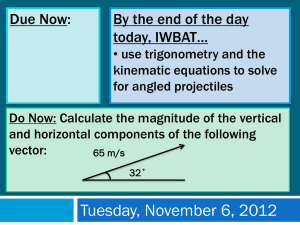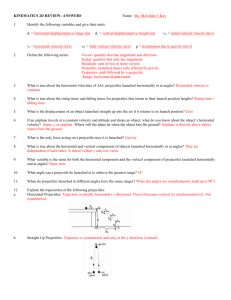Projectile Motion at an Angle: AP Physics Review
advertisement
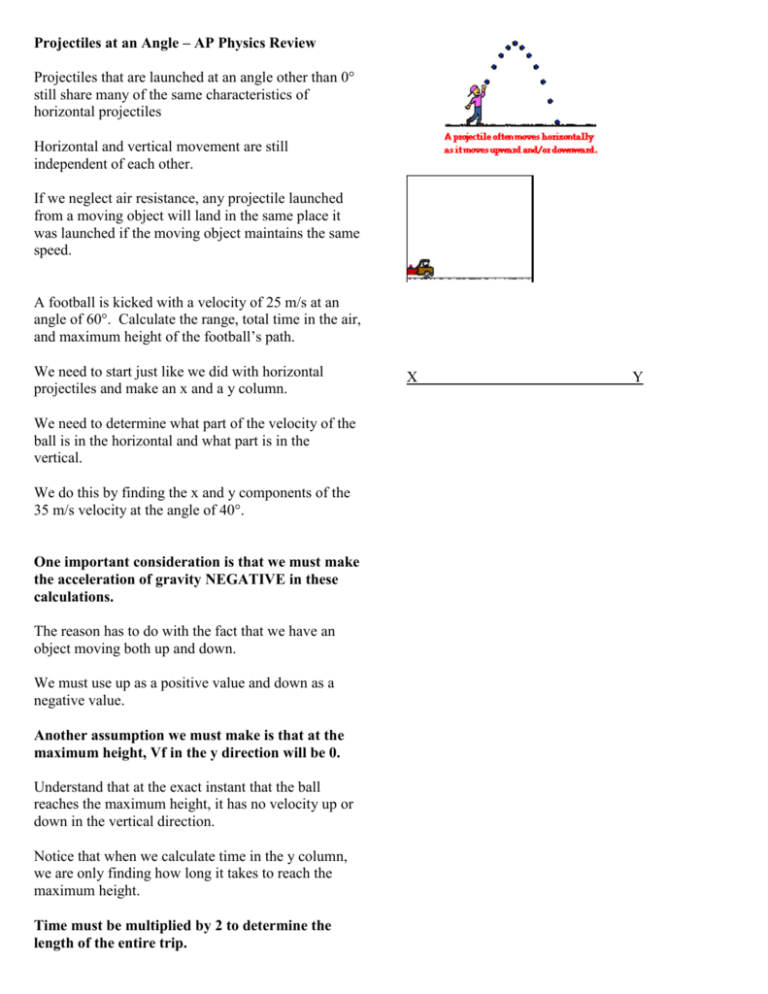
Projectiles at an Angle – AP Physics Review Projectiles that are launched at an angle other than 0° still share many of the same characteristics of horizontal projectiles Horizontal and vertical movement are still independent of each other. If we neglect air resistance, any projectile launched from a moving object will land in the same place it was launched if the moving object maintains the same speed. A football is kicked with a velocity of 25 m/s at an angle of 60°. Calculate the range, total time in the air, and maximum height of the football’s path. We need to start just like we did with horizontal projectiles and make an x and a y column. We need to determine what part of the velocity of the ball is in the horizontal and what part is in the vertical. We do this by finding the x and y components of the 35 m/s velocity at the angle of 40°. One important consideration is that we must make the acceleration of gravity NEGATIVE in these calculations. The reason has to do with the fact that we have an object moving both up and down. We must use up as a positive value and down as a negative value. Another assumption we must make is that at the maximum height, Vf in the y direction will be 0. Understand that at the exact instant that the ball reaches the maximum height, it has no velocity up or down in the vertical direction. Notice that when we calculate time in the y column, we are only finding how long it takes to reach the maximum height. Time must be multiplied by 2 to determine the length of the entire trip. X Y


